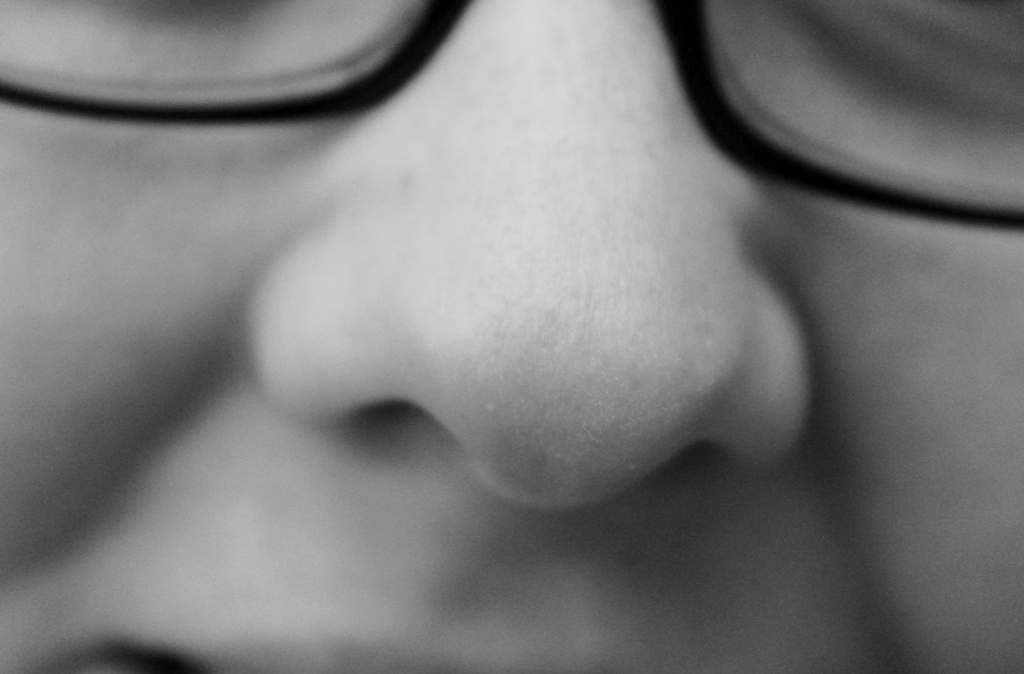This post is also available in Dutch.
While most of us probably never considered having two nostrils anything but normal, it has puzzled scientists for a long time. So why do we have two nostrils?
Although we still have the coldest days of this winter ahead of us, a flu epidemic has kept Dutch doctors busy the past few weeks. Unfortunately, I was one of the many who were not so lucky to be spared by the viral infection. So I had the “pleasure” of staying in bed for a few days and for most of the time I wasn’t able to breathe through my nose or smell anything. Even though a stuffy nose is extremely annoying, when you have one, you can make an interesting observation, which has to do with one of the lesser known fun facts about the human body.
Have you ever noticed that when having a stuffed-up nose, it sometimes switches between being fully clogged and allowing for at least some airflow throughout the day? One of the reasons for this is that at any point in time we have one dominant nostril, which allows more air to pass than the other, and it switches back and forth during the day. This is the result of a slight swelling of the mucous tissue on one side, which obstructs the airflow temporarily, until the dominant nostril changes. But, why on earth would we have two nostrils and then only use one mainly? Wouldn’t it make more sense to just have one big hole in our nose? Humans only have one trachea after all, so we do not smell in stereo (although other mammals are able to).

Different from the illustration above, the airflow through the left and right nostril is actually not the same, with one being a high-flow nostril and the other being the low-flow nostril. The roles change every few hours. Image by rettootje via Wikipedia Commons (CC0 1.0).
Researchers from Stanford University have addressed this question and found that there actually is an advantage to having two nostrils. Although we are not quite able to smell in stereo, having two nostrils instead of one does improve our ability to detect different smells. The researchers mixed two substances with distinct smells together: one that smelled like peppermint, while the other one resembled the smell of anise. Then they had participants smell a mixture containing the two substances with one nostril at a time. Interestingly, one chemical was only detected by the nostril with high airflow, while the other could only be smelled with the low-flow nostril.
This segregation is caused by different absorption rates of the two substances. As a matter of fact, chemicals do not only have to enter the nose, but also have to pass through the mucus in order to bind to the smell receptors. A substance with a low absorption rate does not get a chance to reach the smell receptors if it passes by too quickly in the dominant nostril; however, it can be absorbed by the receptors if the airflow is much lower. A highly absorbent compound, on the other hand, is hypothesized to require a higher airflow because it otherwise will only bind to a small surface, as it is absorbed too quickly, which prevents proper detection of the smell.
In summary, having two nostrils increases our sensitivity to certain smells and gives us a greater range of smell. Of course, our sense of smell is still not as great as that of other mammals, take dogs as an example, but, be honest, if you had the chance to choose a superpower, would you pick an extraordinary sense of smell? Probably not…
Written by Eva, edited by Monica and Marisha.

The alternating nostril cycle has a lot more to do with brain health, rather than merely scent detection. . .
1) Activating the mitochondria in the white blood cells flowing through the vessel-rich nasal area (improve immune response).
2) Stimulating overlapping smell & vision neurons (without changing their tuning to orientation — and drawing any adverse mitochondrial response) to measurably increase whole brain neuron flow & lower inflammation.
3) Light & Limbic Brain Entourage Influence — which helps encourage healthy brain response (particularly in sleep cycles) and provides a temporary reprieve for parasympathetic “oversight” of the alternate nostril cycle.* *https://en.wikipedia.org/wiki/Nasal_cycle
~~~
Note in the Sanjay Gupta “Chasing Life” program Alternate Nostril Breathing & Inversion are touched upon here: https://www.youtube.com/watch?v=qOCLRvxgj_M (around 3-min mark)
Dear Randy,
Thank you for your reaction and for providing valuable additional information. Unfortunately, I was not able to find any scientific literature on the first two points that you mention. I’d be interested in more detailed information about the nasal cycle and these other processes such as immune responses and inflammation. About the third point, I’d like to point out that the forced (voluntary and conscious) alternate nostril breathing is different from the natural and only partial congestion and decongestion of the nasal cavities. So I don’t think the results of this research are one-to-one applicable to the natural nostril cycle.
Kind regards,
Eva